No trip to Mendoza would be complete without joining a Mendoza Andes tour to the High Mountains!
After several days spent touring wineries and vineyards and tasting wine, we decided it was time to see a bit more of Mendoza. We wanted to get out of the city and see the rugged landscapes, so we booked a full-day excursion to the High Mountains.
This tour takes you west of Mendoza City making stops at landmarks like Potrerillos Dam, Uspallata, Puente del Inca, the Aconcagua Lookout Point and the Christ Redeemer of the Andes statue which stands on the border between Argentina and Chile.
We joined a guided bus tour for this Mendoza Andes day tour, however, if you’d prefer to have more control over your schedule, you can either hire a driver for the day or rent a car and visit all of these attractions independently.
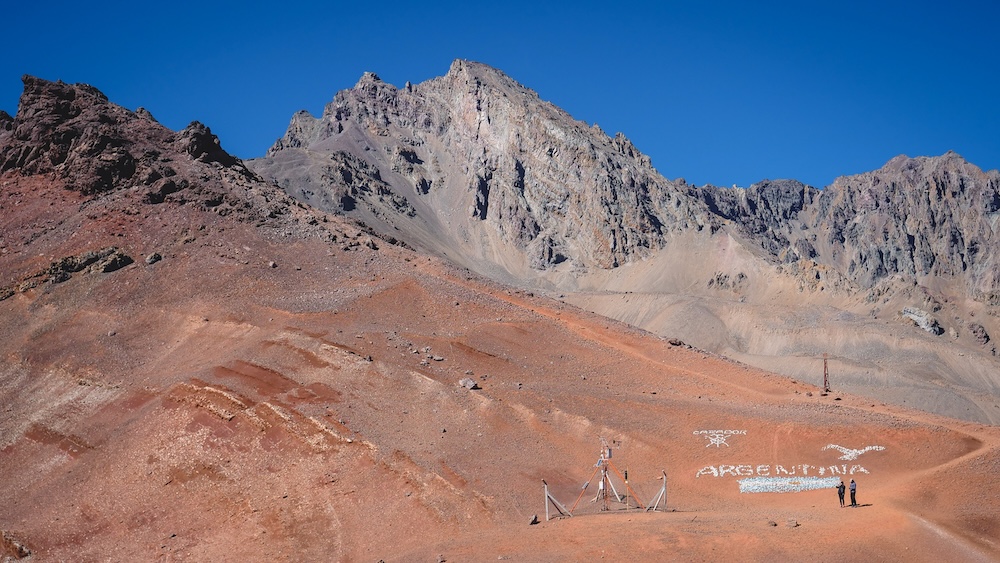
Andes High Mountain Day Tour
✅ Rated 4.7/5 ⭐
✅ 10-12 hour tour
✅ Recommended by 94% of travellers
This Andes High Mountain tour departs from Mendoza City and visits Potrerillos Dam, Uspallata, the Inca’s Bridge, Aconcagua Lookout Point, Christ Redeemer of the Andes, and Las Cuevas. It’s an action-packed full-day tour.
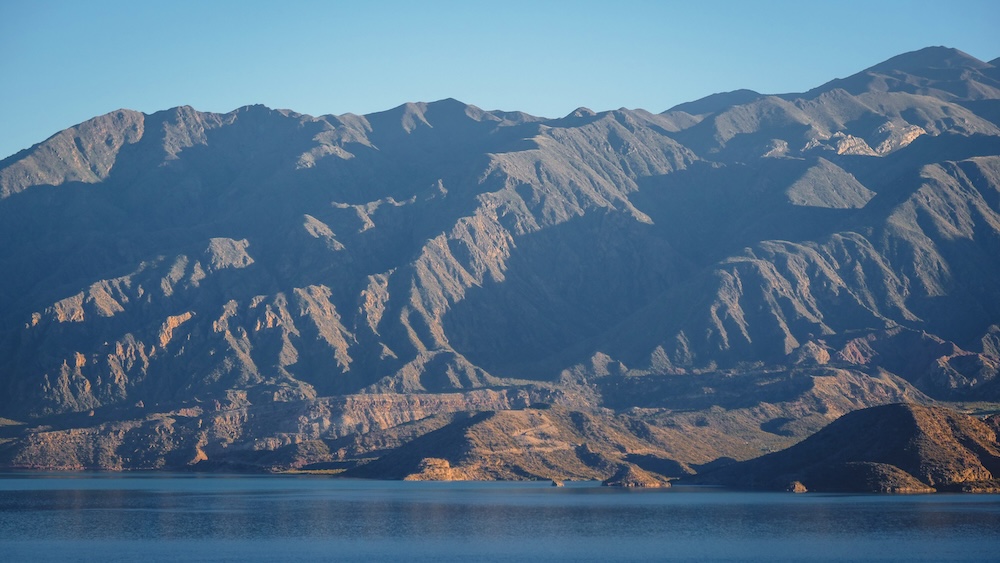
Potrerillos Dam
Our first stop of the day was the Potrerillos Dam which is located just over an hour’s drive west of Mendoza City.
Locally known as Dique Potrerillos, this is a picturesque reservoir framed by towering Andean peaks and it sits on the Mendoza River at 1,380 metres above sea level.
The dam was completed in the early 2000s and is crucial in supplying water and hydroelectric power to the region.
It is also a popular recreational spot with locals who come to enjoy a variety of outdoor activities such as kayaking, stand-up paddleboarding, and windsurfing.
The tunnel leading to the Potrerillos Dam is called Túnel de Cacheuta and it’s a really popular photo op with visitors. It perfectly frames the dam, however, there isn’t really enough space to pull over, so it’s best to continue to the lookout point to snap your photos.
We had been driving about an hour when we reached Potrerillos, so we enjoyed a quick stop to snap some photos and stretch our legs.
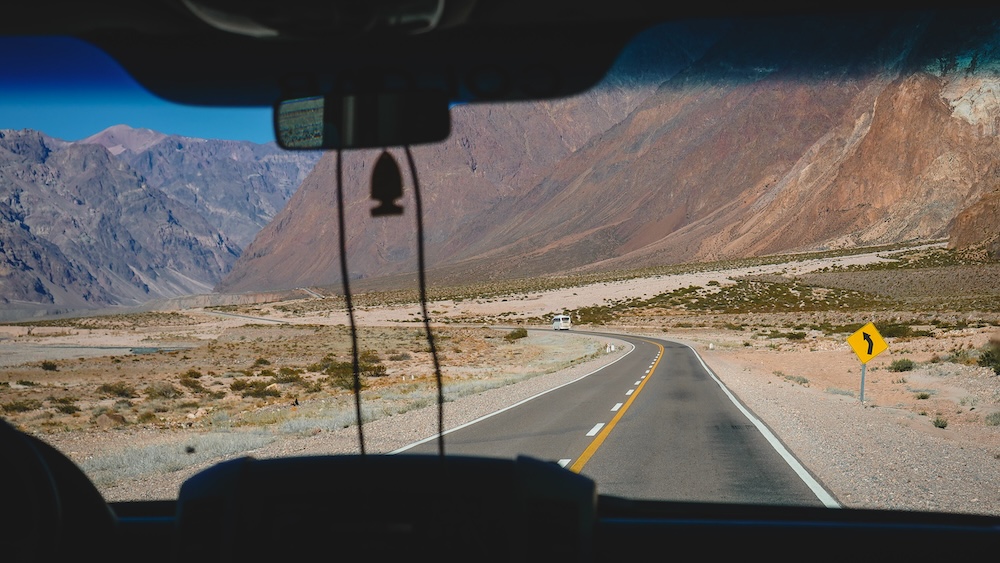
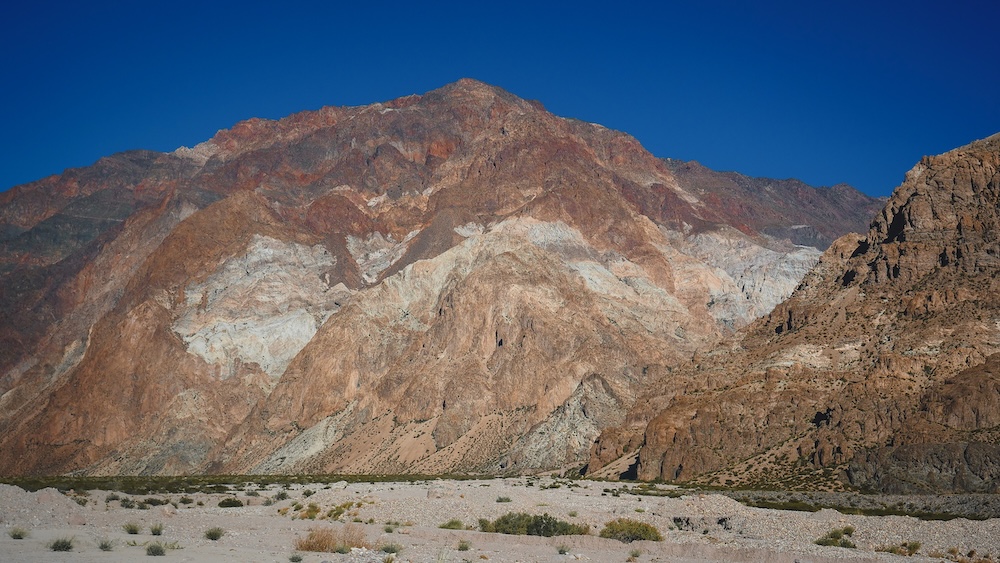
Uspallata
From there, we continued onwards to the town of Uspallata another hour away.
Uspallata is a tranquil valley town that serves as a gateway to Mendoza’s High Andes. The town is surrounded by the Cordon del Plata mountain range, and the area’s desert-like scenery features dramatic rock formations and wide-open skies.
You may be surprised to hear that the 1997 movie Seven Years in Tibet featuring Brad Pitt was filmed in Uspallata! The nearby Andes Mountains served as a backdrop to mimic the Himalayas.
Once we arrived in Uspallata, we had some free time to walk around. The tour had started very early so we were desperate for breakfast, and went in search of coffee and a quick bite.
We made a beeline for Casita Suiza, where you can get tea, coffee, medialunas, alfajores, cakes and sandwiches – something to keep us going until lunchtime!
Others enjoyed a little stroll through town, but it was still quite early in the day so not many businesses were open.
From Uspallata, we drove another hour along Route 7 enjoying dramatic mountain landscapes and passing through small villages, hamlets, and Los Penitentes ski resort before reaching our next stop: the Inca Bridge.
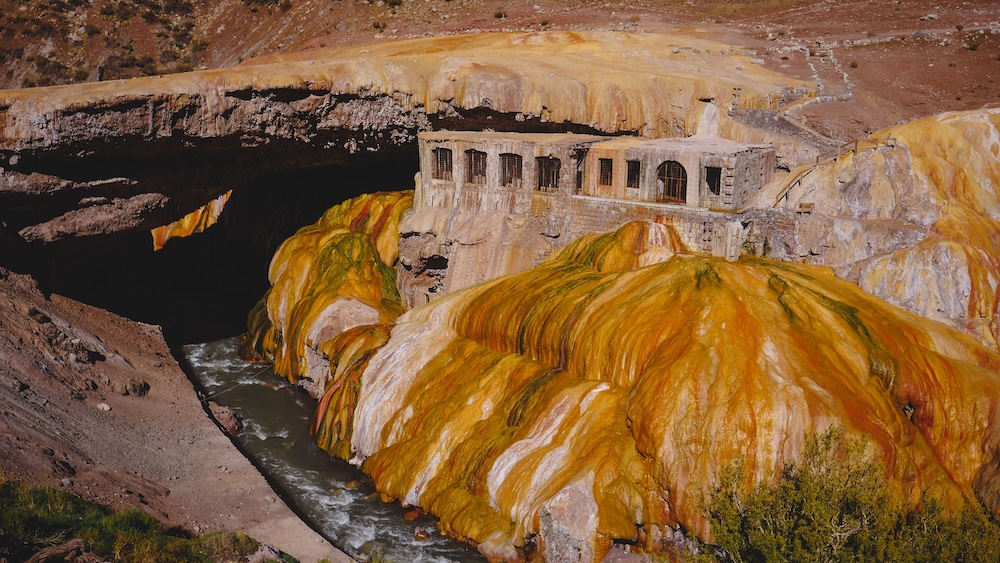
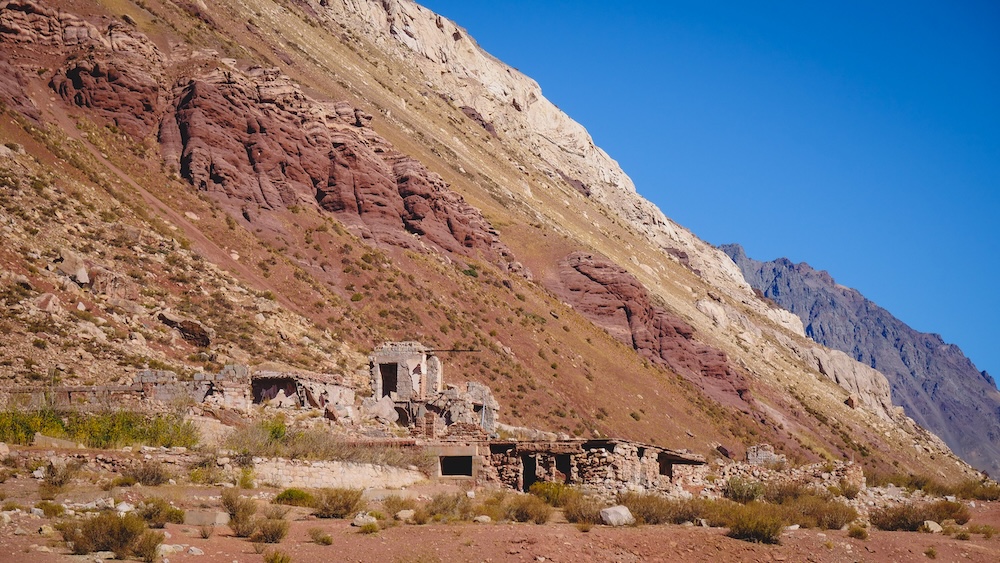
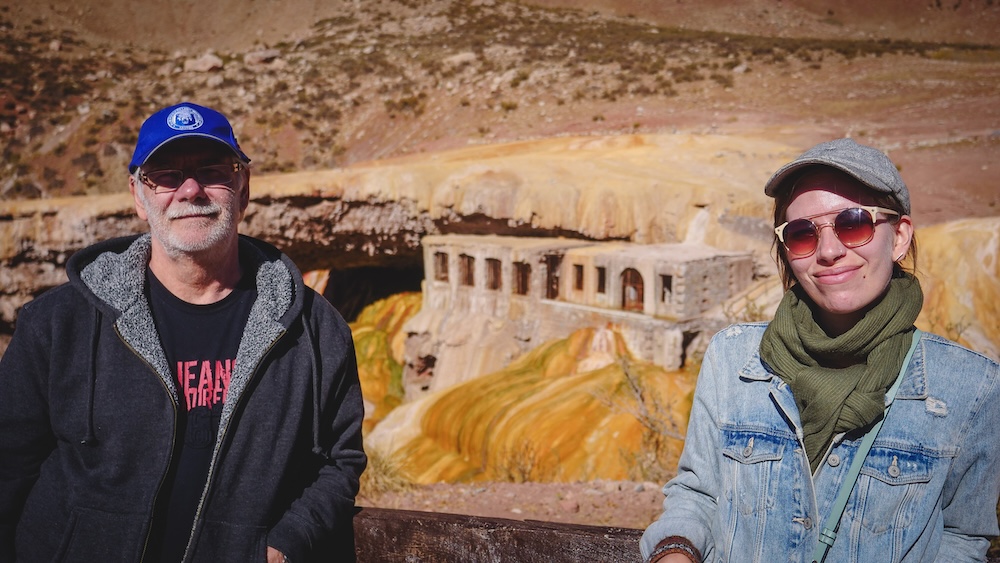
Puente del Inca
Puente del Inca, or the Inca’s Bridge, is a natural rock formation across the Cuevas River, a tributary of the Mendoza River. It is located about 180 kilometres from Mendoza.
What’s unique about the arch known as Puente del Inca are its vibrant colours. The water that flows from the hot springs is rich in minerals, which cause the yellow, orange, and red hues. Anything the water touches eventually becomes crystallized.
Fun fact: During his 1835 trip to South America, Charles Darwin visited Puente del Inca where he made drawings of the bridge and its large stalactites.
This unique spot gets its name from Inca legends, though it was also historically used for its nearby hot springs.
During the early 20th century, a thermal resort and monastery operated the hot springs to treat certain illnesses. Tourists arrived at the resort via Ferrocarril Trasandino Los Andes, a train that continued into Chile through a long tunnel under the Andes.
The railway station is still standing, though long abandoned. Meanwhile, remnants of an old thermal hotel can still be seen near the site, which was sadly destroyed by a landslide leaving only a chapel standing.
While the thermal resort at Puente del Inca is long gone, there is another thermal spa further down the river called Termas Cacheuta which is quite popular.
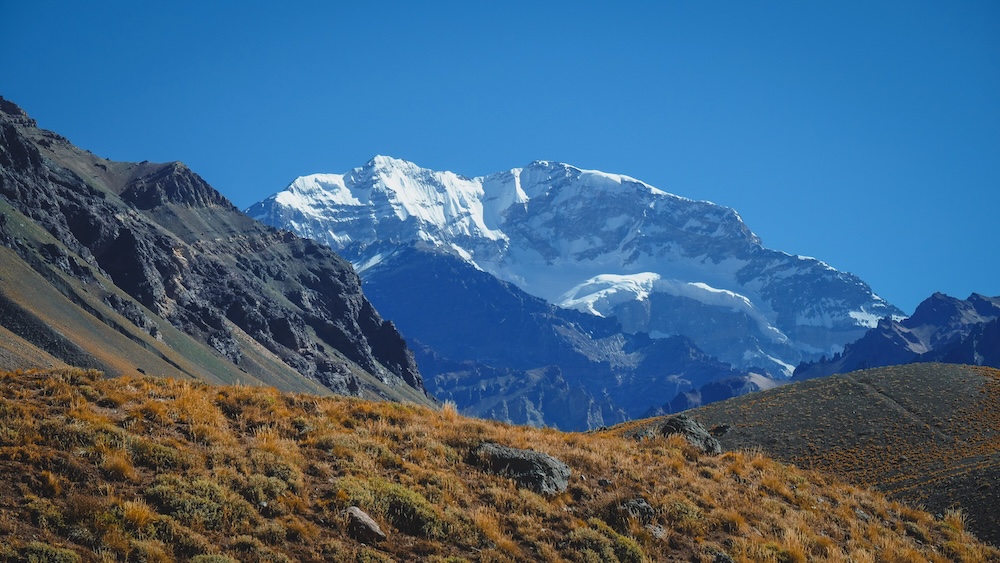
Aconcagua Lookout Point
We then stopped at the Aconcagua Lookout Point right along Route 7. On a clear day, you can see the peak of the highest point in the Americas standing 6,960.8 meters high, and we got pretty lucky with the weather that day!
For any of you visiting by car with a bit more time, the entrance to Aconcagua Provincial Park is right next to the Aconcagua Lookout Point, and there are multiple trails should you be in the mood for some trekking.
While serious mountaineers enter the Aconcagua Provincial Park for multi-day treks, most day-trippers settle for the Horcones Lagoon circuit, which offers scenic photo spots. You can view a list of the trails at Aconcagua Provincial Park here.
Our tour just stopped for photos, but this is a place where the mountains beckon, so maybe give yourself more time!
⛰️ If you’re not an avid mountaineer but want to hike in Aconcagua Provincial Park, you can book this Full-Day Aconcagua Experience which includes a 1-hour hike. You also get to visit the Potrerillos Dam and Puente del Inca.
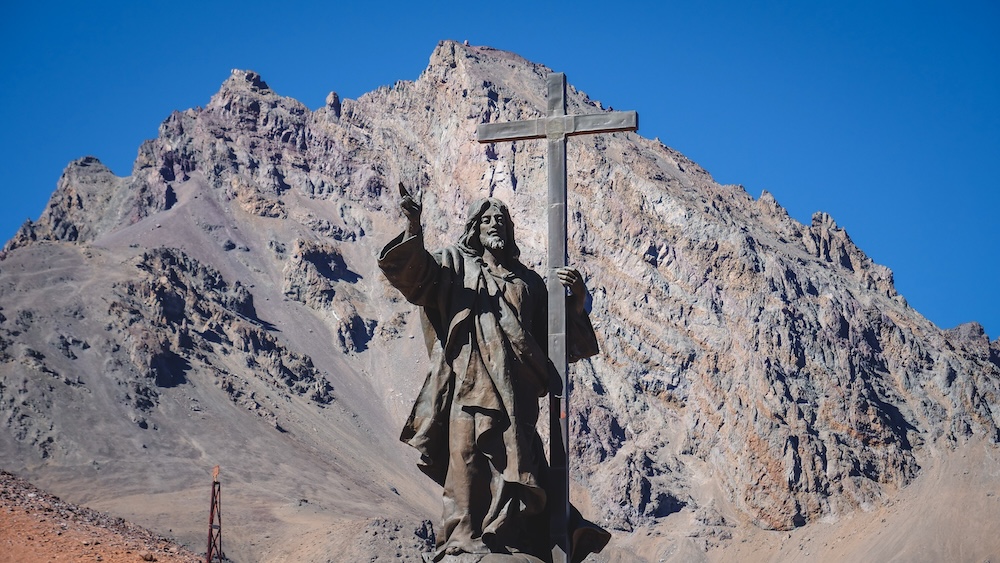
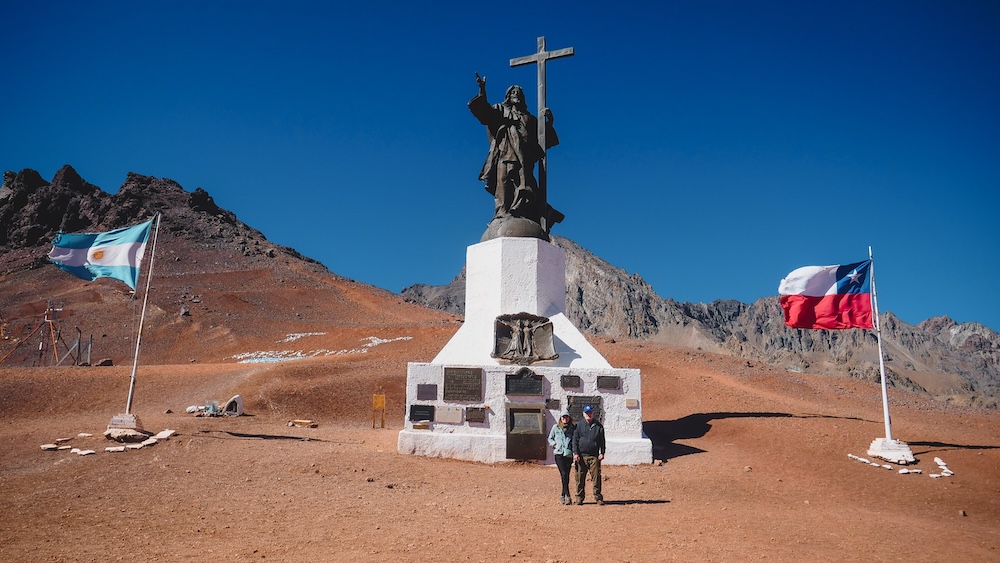

Christ Redeemer of the Andes
Of course, no Mendoza Andes day tour would be complete without visiting Christ Redeemer of the Andes, which sits on the border between Chile and Argentina.
The statue stands at a dizzying altitude of 3,832 meters above sea level. It is reached via a very winding road that zigzags its way up the mountain.
Christ the Redeemer of the Andes is a statue symbolizing peace and the historic friendship treaty between the two nations.
At the foot of the sculpture, there is an inscription that reads:
“Sooner shall these mountains crumble into dust than Chileans and Argentines break the peace which at the feet of Christ, the Redeemer, they have sworn to maintain.”
Inaugurated in 1904, the 7-meter bronze statue stands as a reminder of a boundary agreement that avoided conflict between the two countries. It is situated on the pass of Cumbre del Bermejo, where José de San Martín crossed the Andes in 1817 to liberate Chile from Spanish colonial rule.
On clear days, you can enjoy breathtaking panoramic views of the surrounding Andean peaks and valleys.
It’s important to note that the road up to Christ the Redeemer of the Andes is only accessible during the summer months when there is no snow. Winter temperatures can reach -30 °C and the amount of snow makes it impossible to circulate.
There were a few stands selling aguardiente at the top of the mountain. This is a hard liquor which we were told was a good idea if you’re feeling cold or lightheaded from the altitude!
My final tip is to dress in layers and pack a windbreaker for the High Andes portion of this tour as the wind up there blows hard! The weather will be completely different from Mendoza City.
Las Cuevas
After visiting Christ Redeemer of the Andes, we started our descent to the town of Las Cuevas.
This is where we had a lunch stop. Lunch is not included in this Mendoza Andes tour, so you either have to pack your own, or you can eat at one of the few restaurants in the village. Meals are simple and quick. We got some empanadas and some French fries since none of us had a big appetite at that altitude.
Las Cuevas is the last Argentine town before reaching the Chilean border, situated at around 3,200 meters above sea level. It’s a small settlement with a handful of quaint buildings and a sense of isolation, surrounded by soaring peaks and snow-capped ridges. Historically, it served as a stopover for travellers crossing the old Trans-Andean Railway.
This was the final stop of our High Mountain tour, so this is where we did a U-turn and started the 3-hour drive back to Mendoza. However, if you’re road-tripping on your own and you’re continuing onwards to Chile, you would cross at this point via the Cristo Redentor Tunnel.
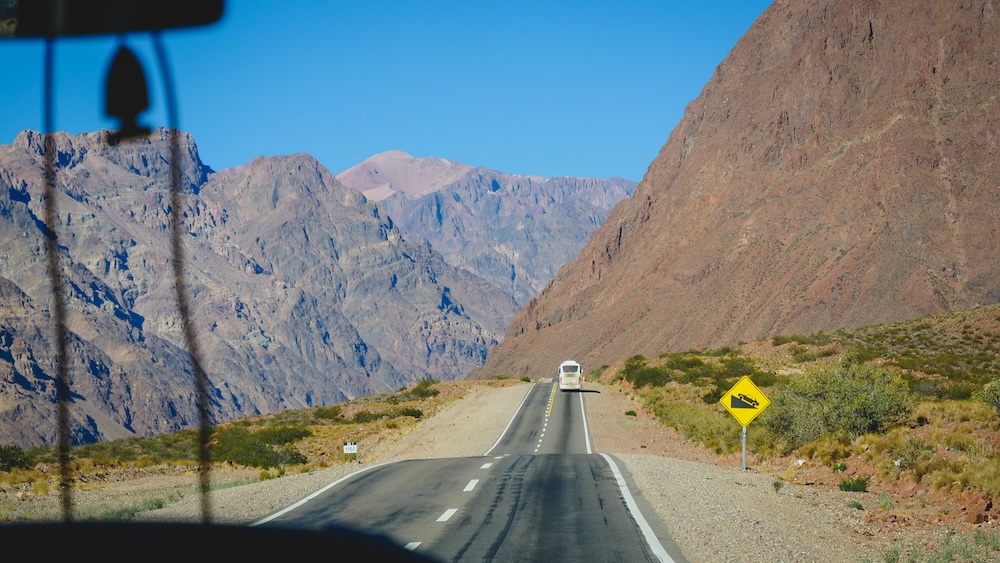
Is the Mendoza Andes Day Tour worth doing?
If you’re looking for a different Mendoza tour, one that isn’t focused on wineries and vineyards, and brings you into the High Andes, then this tour fits the bill. You’ll get to see the highlights west of Mendoza and go as far as the Argentina-Chile border.
Keep in mind that there are a few different ways to visit these landmarks. You can either book a group excursion, hire a private driver, or rent a car and visit these attractions independently.
The thing to keep in mind with group tours is that there’s a schedule to keep. You’ll get to see everywhere, but you won’t linger anywhere. We got around 20 minutes at each stop, which was enough time to snap a few photos and have a look around, but it’s very different from the independent style of travel that we’re used to.
I would say the tour is worth it if you really want to see places like the Potrerillos Dam, the Inca’s Bridge and Christ the Redeemer of the Andes. However, I think it would have been an even better experience if we had rented a car and done things at our own pace, which is much slower! We did this tour in early autumn when the weather in Mendoza was quite mild.
All that being said, the Andes High Mountain tour has a 4.7/5 rating, is recommended by 94% of travellers, and it’s one of the more popular tours from Mendoza. So to each their own!
You also need to consider how many days you have in Mendoza and what experiences you’d like to prioritize. Are you looking for a remote estancia stay where your days are filled with horse treks? Do you want to stay at a wine hotel and visit neighbouring vineyards and wineries? Or do you want an action-packed schedule where you get to explore a different corner of Mendoza each day? The choice is yours.
GROUP TOURS – If you’d rather join a group tour to travel in Argentina, check out Gadventures.
CAR RENTAL – To explore Argentina beyond the cities, the best way to do so is by renting a car. Discover Cars offers rentals across the country.
BUS TICKETS – Bus travel is a great way to see Argentina. BusBud offers numerous routes.
TRAVEL INSURANCE – Don’t leave on your trip without booking travel insurance. You can get a quote on SafetyWing.
HOTELS – Booking.com offers accommodations to suit all budgets and travel styles.
TOURS – For a variety of tours and activities, have a look at Viator.
